artworks, artists and exclusive offers. Sign up now
[SHOWS] Nine Eyes of Google Street View @ Sprüth Magers, Online Exhibition
JUNE 29, 2020
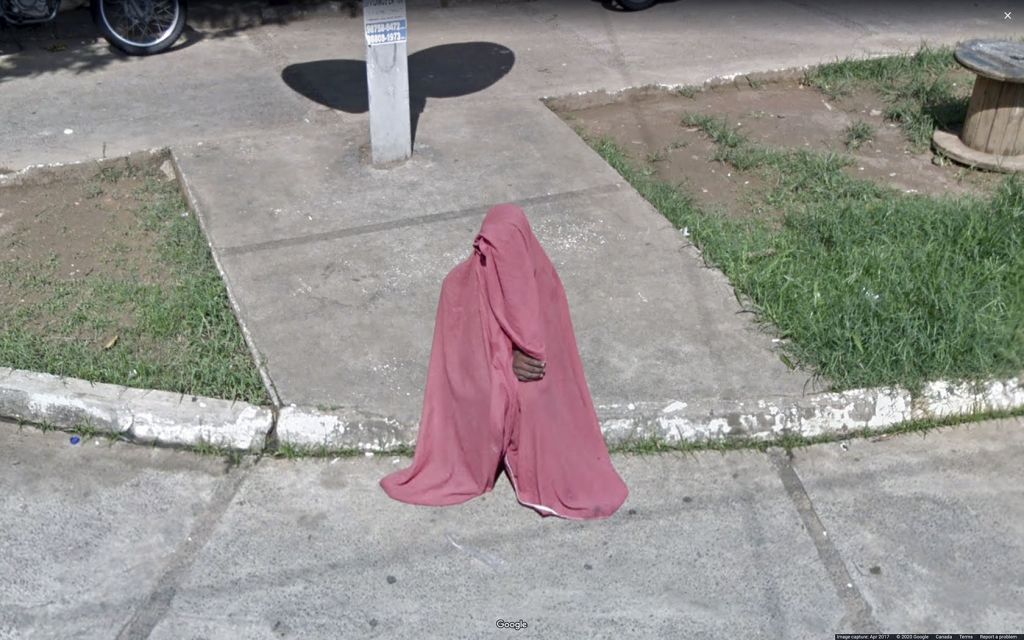
17 Praça Conselheiro João Alfredo Salvador, State of Bahia, Brasil, Archival pigment print, 101.6 × 162.5 cm
Jun 25 - July 25, 2020
Online Exhibition
The images, all captured anonymously by the spider-eyed ball atop a Google van, range from the haunting to the lyrical. Despite the specifics of time and location, each picture resonates with symbolic force.
For this online exhibition, Rafman presents a new slideshow and sixteen prints. The slideshow, at the top of the page, is viewable exclusively online, and was programmed to create a random, constantly changing sequence of images from Nine Eyes of Google Street View. The sixteen prints offer snapshot epiphanies from far-flung corners of the globe, and each one is titled after the particular location of its capture.
In The Slowdown, a specially commissioned text for the exhibition, novelist Ned Beauman imagines a future – if not the present – where time has almost ceased to tick.
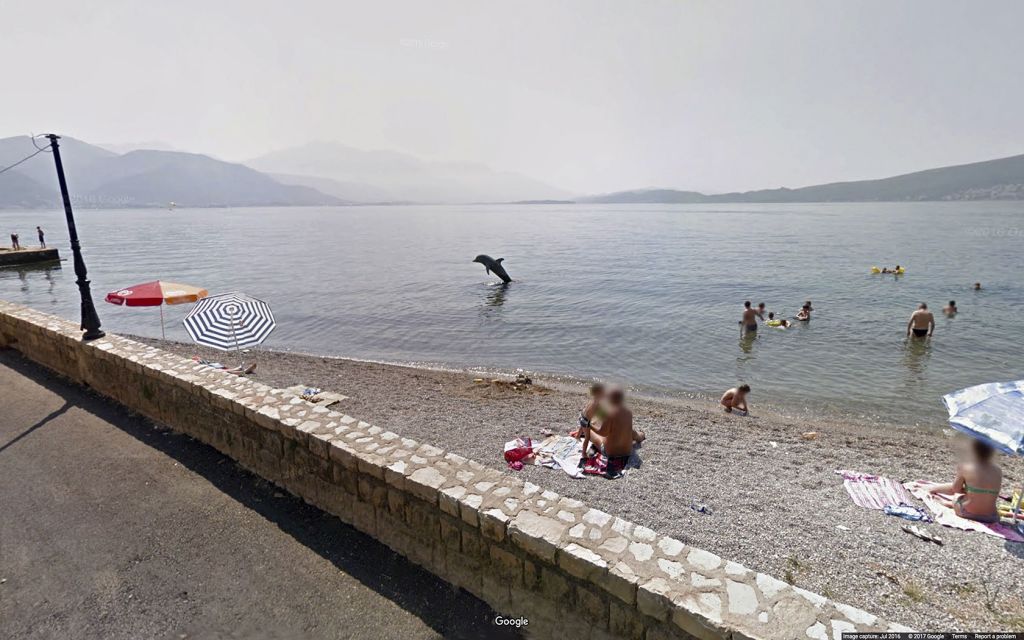
Baošići, Herceg Novi Municipality, Montenegro, 2017, Archival pigment print, 101.6 × 172.7 cm
The Slowdown
by Ned Beauman
Time ticks. A Planck time unit, the smallest possible increment of time, is how long it takes a beam of light to cross a Planck length, the smallest possible increment of distance. In this way reality itself has a frame rate, like a film: it does not proceed continuously, but in a series of jerks and ratchets, Planck time unit after Planck time unit, tick after tick. The feeling we have of smooth motion is an illusion, the result of our eyes and brains working far too slowly to notice the gaps, on the same principle as a TV cartoon that tricks us into seeing a dog running by shuffling between a few drawings.
In previous eras the frame rate of reality was the same everywhere (or at least that’s our best guess): each second fits about twenty tredecillion Planck time units, allowing for about twenty tredecillion discrete states. Only lately has the rate fallen to just one frame per year, and in many places even less than that.
You have no way to know when your corner of the universe will update. You know only that nothing can happen between frames, even if the state of things is different from one snapshot to the next. Any impression you may have of your existence carrying on in the meantime—including, for instance, reading these words—is just a neuro-flim-flam, a soothing lie, on the same principle as that cartoon dog. Some people still insist that, for them, life rolls on as normal, but we know they are mistaken. Generally it is the older and less educated who cling to this belief.
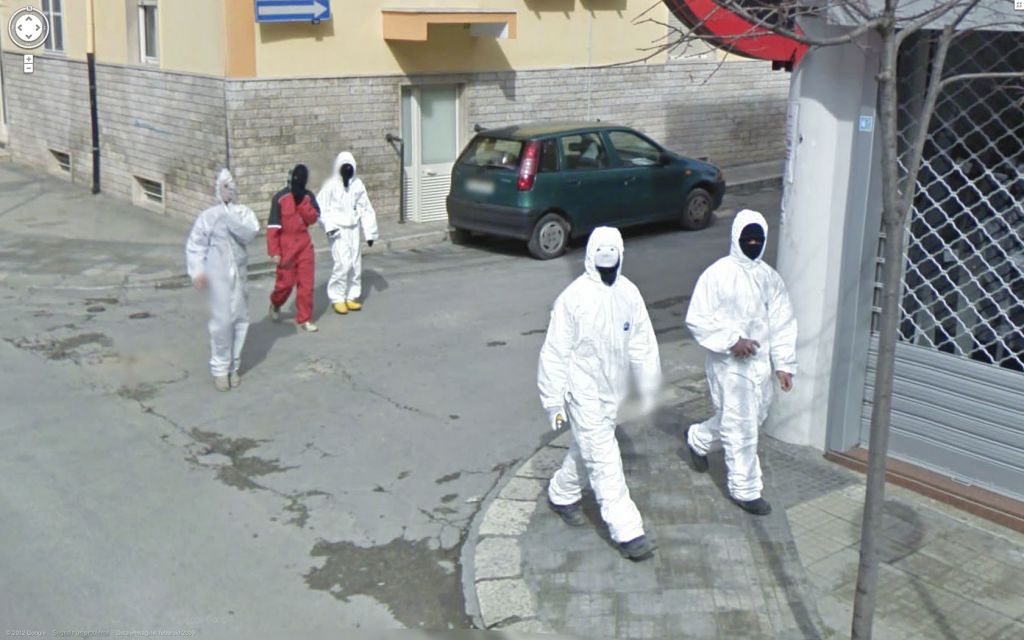
Via Guglielmo Marconi, Grottaglie, Puglia, Italy, 2013, Archival pigment print on dibond aluminium, 101.6 × 162.5 cm
What governs the updates, their faltering and irregular course through the world, is still unknown. Physicists say that the answer to this question, if there is one, must lie deep in the quantum vacuum. And yet there are the eye-witness reports, too convergent to be completely ignored: a creature with a spindly body and a crimson head that is said to be present at the exact instant that reality ticks forward. Perhaps this hallucination is one of those human universals that emerge from some atavistic structure of the brain, an incubus conjured not by night terrors but by the grip of time.
Naturally, there has been a wild range of responses to this slowing of the frame rate—to the anticipation of being frozen in a particular state for at least a year and perhaps much longer, inert, unconscious. If the citizens of Pompeii had known the ash cloud was coming, how would they have arrayed themselves? Most of us choose to stay inside, where we have privacy, comfort, proximity to loved ones. Often the streets are deserted.
But not always. These days more and more people mark each tick with ritualistic behavior. You might find them lying flat on the ground; climbing up onto fences and walls; putting on absurd costumes, or partially disrobing. You might find whole crowds of people rushing out into the open together. The sheer indignity of being trapped in these postures for the long haul seems to trouble them not a bit. Of course, there is no logical basis to any of it, and yet they really believe that these rain dances can win kinder treatment for themselves and their homelands, as if somehow it were possible to propitiate spacetime itself. It is troubling how quickly such delusions can spread.
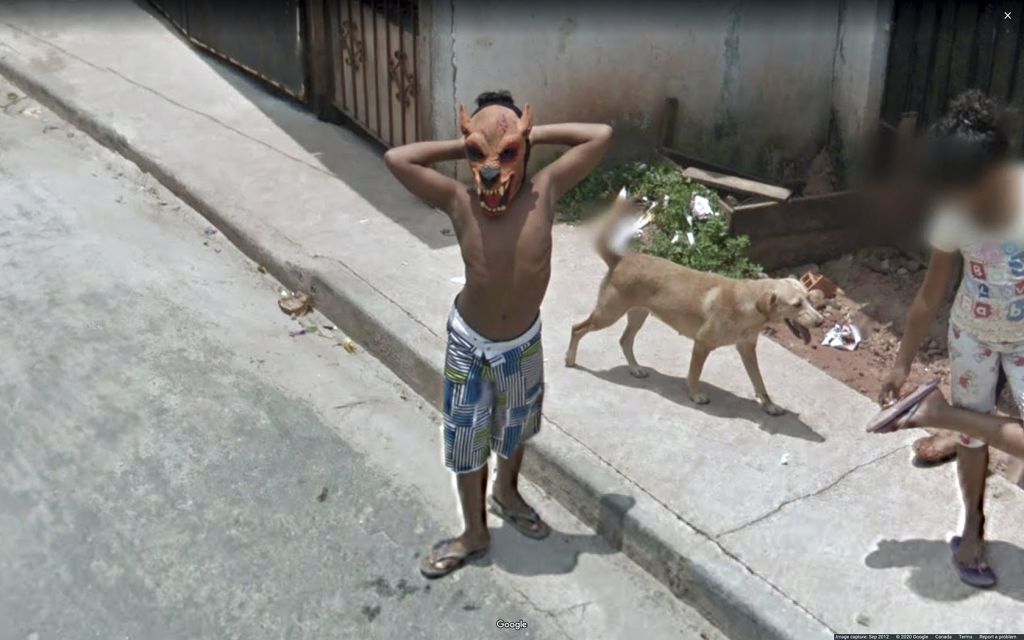
111 Rua Caraparú, Belém, Pará, Brasil, 2020, Archival pigment print, 101.6 × 162.5 cm
It is not particularly instructive to ask one of these ritualists what they expect to accomplish (and here we must allow ourselves for a moment to fall into the old idioms, pretending that such a conversation could still play out moment by moment, instead of flickering directly from hasn’t-happened-yet to has-already-happened). Earnestly they will tell you that they hope the crimson-headed entity—needless to say, they all believe in the entity —visit them more often. They are praying to be updated twice, even three times a year. Why on earth the entity should smile upon these particular observances, they are never able to explain. It’s just something they’ve been told. In most cases they will then begin talking ominously of the parts of Africa and central Asia that the entity has supposedly never visited.
True enough, there is reason to believe that these regions have yet to tick forward even once. But one ought not to jump to the conclusion, as so many have, that for their inhabitants time has therefore halted entirely. A counter-theory proposes exactly the reverse: that whatever cosmic palsification has swept across the rest of the world has not yet touched these places, and so time there maintains its nimble old division into Planck units.
More data is needed to settle the question, a project hampered, perhaps, by the superstitious reluctance of some scientists to cross the borders. But almost as tantalizing is the question of other forms of life. It is doubtful that human beings will ever fully reconcile themselves to this new meter, but a horse—a penguin—a butterfly? Already one has the sense that they are finding their balance faster than we are, and perhaps in a few more generations, their metabolisms will fall into rhythm with the coarser frame rate. They will evolve, adapt, until all their lives are lived quite naturally a year at a time, while we will strain awkwardly for footholds on this new terrain, still clowning for the entity, and grieving for the meanwhile.
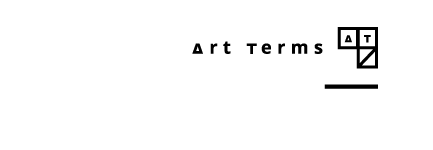
| Prev | [CRITIQUE] Kwon Hyuk: Energy Following The Line, The World Bound By Lines |
|---|---|
| Next | [News] Hyun Ae Kang’s exhibition at MUSEO Dei Bozzetti, Pietrasanta, Italy |
| List |